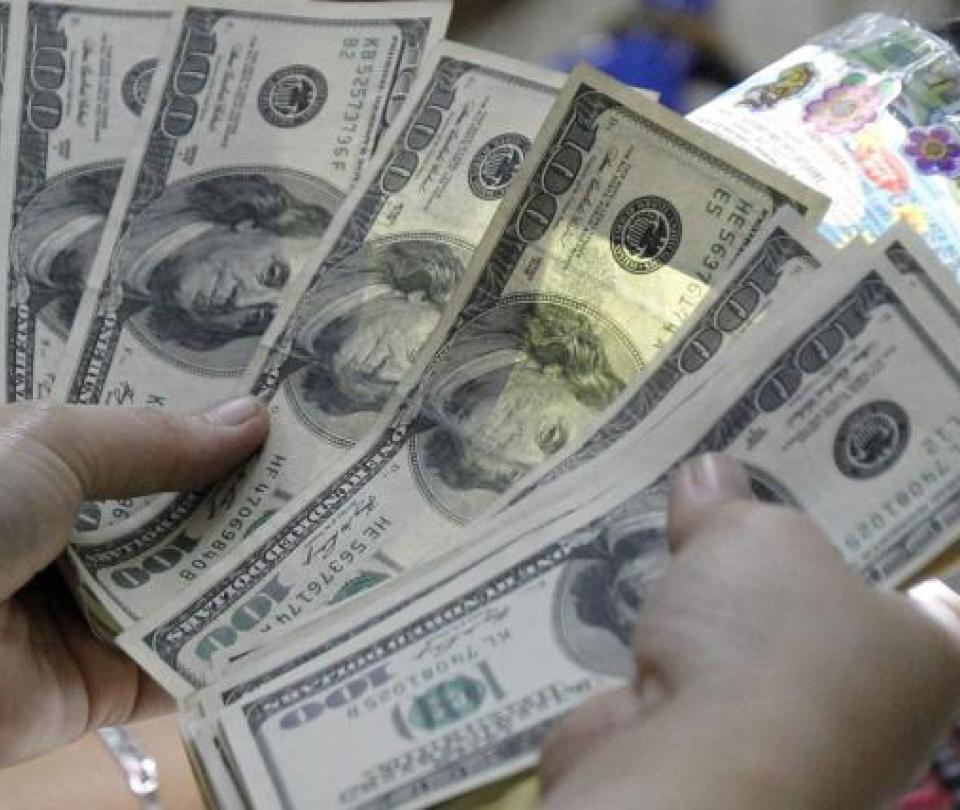Although in the last three days of last week the dollar in Colombia registered a sharp drop of $232, up to $4,395.63, which is the Representative Market Rate for this Monday, this year the greenback presents a net increase of $413, which represents a cause for concern for different economic sectors and consumers, especially, since several products sold in the country are imported or are Colombian, foreign raw materials may intervene in its manufacture.
In this sense, the devaluation of the peso, which during this year reaches 10.41% and in the last 12 months it is 15.40%, implies more costs, which could feed an inflation that has been increasing for a year and on which the Banco de la República has been acting as of September 2021 with increases in interest rates, its main monetary policy instrument.
The strengthening of the dollar against almost all the currencies of the world has been generated by the increase in the interest rates of the FED (US central bank) to combat high inflation, the possibility that the economic power enters a recession, the decrease in the price of various raw materials (commodities), the conflict in Ukraine due to the invasion of Russia and that it could generate gas and oil supply problems for some European countries.
Thus, internally in Colombia, with the accelerated loss of the value of the peso against the dollar, analysts say that more are losing than gaining.
The latter are the exporters, who benefit from a balance in which they are paid a greater amount of pesos for their sales.
Exports of oil, coffee, flowers, coal, ferronickel, fruits and other goods, which in total sold US$4,552 million in May and an accumulated amount in the first five months of the year of US$22,982 million, are the beneficiaries of the expensive dollar, although it must be said that several of these sectors return very few resources to the country, since most of them are kept abroad in clearing accounts, through which income and expenses are channeled through mandatory channeling exchange operations and are recorded before the Bank of the Republic.
On the other side of the scale are those who import all kinds of goods and services, maintain debts in dollars with regular payments, make purchases online through international ecommerce portals or they acquire foreign products in the country because they are harmed.
During April, Colombia’s foreign purchases were US$6,393 million and in the accumulated of the first four months they reached US$25,333 million, a figure that shows the country’s trade deficit, although even with one month less in the consolidated imports .
And even if the dollar has registered the drop in price mentioned in the previous days, businessmen and importers have found it difficult to obtain the necessary supplies to continue working, since these have an adjustment for inflation and another for the interest rate. change and so they stated in the recent survey of Dane Business Pulse.
In addition, the expectation for July, according to the Dane survey, is that there are greater increases in the dollar in Colombia.
In the same way, the economic analysts consulted in the Monthly Survey of Economic Expectations carried out at the beginning of July, who said that the expectations regarding the closing of the Representative Market Rate in July is an average of $4,464 and in December of $4,204.
The problems are not over
For Diego Gómez, a specialist in the foreign exchange market at the firm Corficolombiana, what has been happening specifically with the peso-dollar relationship is that there was an overbought or an overreaction of the market, beyond the well-founded or unfounded speculation against the local currency in the previous weeks, since high inflation, the tightening of monetary policy worldwide and the danger of a recession in the United States United remain unchanged.
However, the analyst corficolombiana does not rule out that there has also been a reaction at the internal level due to the political situation related to the announcements that have been made by the future members of the government that will take office on August 7, although he considers that it is not easy to distinguish how much of The external situation represents the volatility of the dollar peso market in recent weeks.
In any case, he says that when comparing the peso against the other currencies in the region and the DXY index (relationship of six major currencies against the dollar), it is determined that since June 1 the global devaluation has been 8%.
He comments that even the strength of the dollar has already broken the parity against the euro on several occasions, when at the beginning of the year it was necessary to 1.14 dollars for one euro.
Diego Rodríguez, Managing Director of Bosk Capital, assures that the announcement of intervention by the Chilean central bank in the face of the strong devaluation of the currency “It affects us indirectly because it causes profits to be taken from the speculative positions between the dollar and the Colombian peso, due to the similar characteristics of the two countries.”.
He says that in the case of Colombia, the excess price was due to the lack of depth and liquidity, that is, the capacity of an operator such as a foreign fund or an AFP to affect the price with a relatively low volume and says that if this week the currency market is against the dollar and the price of oil rises, the dollar in Colombia will continue to fall.
BRIEFCASE






![[Img #74683]](https://thelatestnews.world/wp-content/uploads/2024/12/The-main-mistakes-to-avoid-when-betting-on-electronic-sports-150x150.jpg)








Add Comment